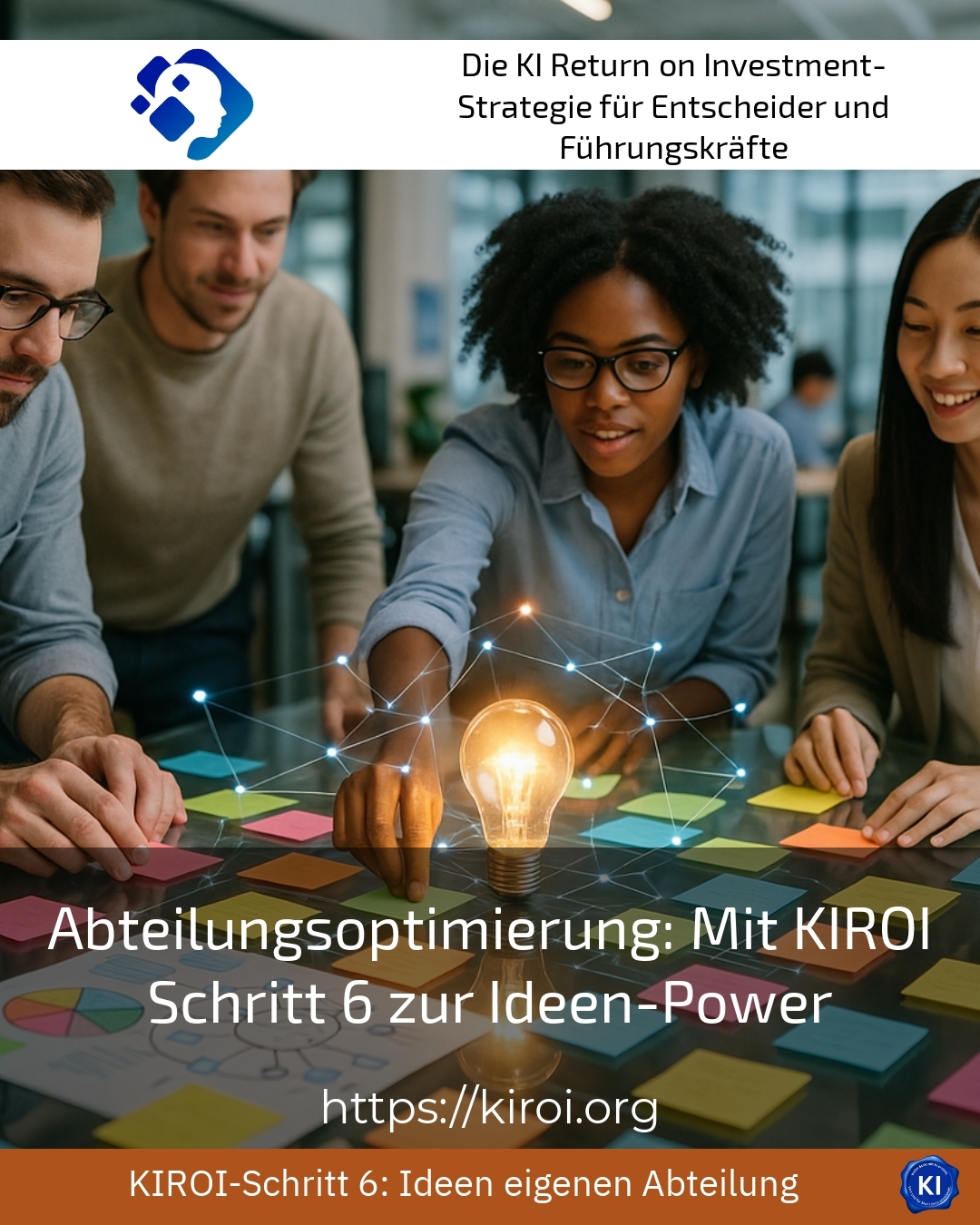Department optimisation: targeted promotion of creative impulses
Efficient departmental optimisation relies on teams finding space for creative ideas and being able to develop them in a structured way. It is important not only to rely on spontaneous ideas, but also to support creativity with the help of clear methods and processes. In this way, KIROI Step 6 creates a balance between open brainstorming and pragmatic implementation that enables departments to make sustainable improvements.
How creativity is specifically developed in departments
As part of departmental optimisation, it is important to apply classic creativity techniques that are also embedded in a process. Methods such as brainstorming or the morphological box invite employees to develop innovative approaches. These approaches are then analysed for causes and structured using tools such as the Ishikawa diagram. This enables an IT department, for example, to analyse technical challenges in a differentiated manner and develop innovative solutions at the same time. The combination of creative techniques and an analytical approach increases the quality of the ideas and facilitates their realisation.
Practical examples from various industries
Departmental optimisation through creative support is effective in a wide range of industries. In one production department, for example, weak points were discovered in the use of materials. An interdisciplinary team used KIROI Step 6 to develop creative solutions and to test and optimise these in the form of several prototypes. This not only reduced costs, but also material resources.
KIROI BEST PRACTICE at company XYZ (name changed due to NDA contract) In a finance department, the application of KIROI Step 6 enabled employees to systematically collect their suggestions for process simplification. Targeted moderation resulted in an action plan that enabled the ideas to be recorded, evaluated and successively implemented, which significantly increased the processing speed.
In a marketing team, KIROI Step 6 helped to structure a large number of campaign ideas. Possible variants were organised and prioritised using a morphological box. This allowed the team to react flexibly to changes in the market and integrate new ideas into the marketing strategy.
KIROI BEST PRACTICE at company XYZ (name changed due to NDA contract) In one logistics department, KIROI Step 6 promoted dialogue between the warehouse and planning teams. The employees jointly developed new approaches to route optimisation, which were tested and iteratively improved on the basis of data analyses. This led to a measurable increase in efficiency.
Department optimisation as a continuous accompanying process
An important component of departmental optimisation is that changes are not imposed, but are understood as support and impetus. KIROI Step 6 supports teams in systematically developing their innovative strength and thinking in a solution-orientated way. Many report that the structured approach increases employee motivation and makes it easier to implement ideas. The integration of cross-departmental collaboration also helps to ensure that synergies can be better utilised.
Concrete support in the day-to-day work of departments
In the day-to-day running of a departmental optimisation process, it is often the case that employees come to a coaching session with challenges when it comes to overcoming creative blockages or combining different perspectives. This is where the KIROI approach is a valuable support in providing impetus for new ways of thinking and demonstrating pragmatic ways of implementation. The focus remains on the individual needs of the department and its projects.
KIROI BEST PRACTICE at company XYZ (name changed due to NDA contract) KIROI was used to support individual project teams within a development department. The coaching helped to harmonise departmental goals and innovative ideas without losing focus on day-to-day operations. Employees learnt to prioritise their ideas and incorporate them into the innovation process step by step.
My analysis
Departmental optimisation with a targeted accompanying approach such as KIROI Step 6 promotes innovative strength in the long term. It is crucial that creative processes are not only stimulated, but also combined with pragmatic tools and a transparent approach. Various examples from production, IT, marketing and logistics show that this approach often strengthens collaboration and delivers measurable improvements. Coaching, which serves as support for projects involving artificial intelligence, can provide valuable impetus here and support teams during implementation.
Further links from the text above:
Department optimisation: With KIROI step 6 to innovative ideas [1]
Establish your own SEO department in the company - OMT [2]
For more information and if you have any questions, please contact Contact us on the topic or read more blog posts on the topic Artificial Intelligence Blog here.















